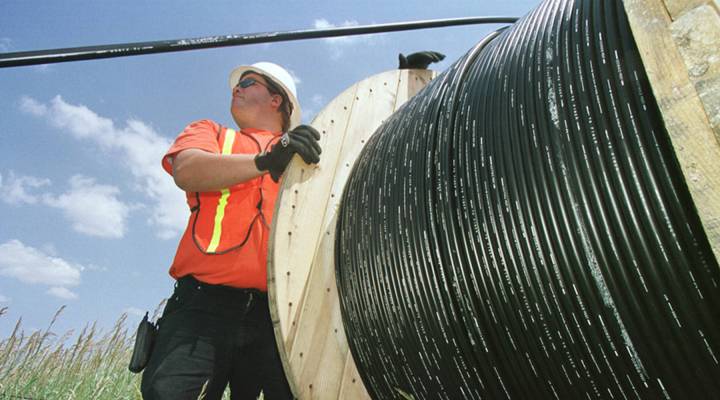
The Federal Reserve is taking on the digital divide
The Federal Reserve is taking on the digital divide

Almost 40 percent of rural America, or about 23 million people, don’t have access to broadband internet or reliable mobile service. Long term, this digital divide is a huge economic problem. Companies need high-skilled workers, and people without decent internet access can’t find those jobs or get the training they might need to do them. Now the Fed is trying convince businesses that the digital divide is their problem, too, Jeremy Hegle told us. He’s a senior community development adviser for the Federal Reserve Bank of Kansas City. Its territory includes Kansas, Nebraska, Wyoming, Colorado, parts of Missouri and northern New Mexico. The following is an edited transcript of host Molly Wood’s conversation with Hegle.
Jeremy Hegle: I think the challenge is helping companies see what that looks like, right? Like, how do I get to that level when I’m busy just working on the day-in and day-out operations of my business.
Molly Wood: And what specific tools does the Fed have to encourage investment in this direction?
Hegle: You know, at the end of the day, we’re not giving funding to job training, we’re not raising funding, we’re not delivering direct programming. From a structural perspective, under the Community Reinvestment Act that essentially requires that banks invest in the communities they serve, there’s some wording within there that outlines different activities that banks can do to meet the credit needs of their communities. And it includes giving grants and giving loans to programs that support low- to moderate-income populations. And so there are some things that we can do there to help educate banks about how they can invest in programs that provide some job skills training and can invest in broadband deployment. But it’s somewhat limited by the writing of the legislation.
Wood: Do you feel like the overall sort of regulatory framework that we’re in right now is helping or hurting? Could there be more help from the federal government also?
Hegle: So, [this is] my opinion and not the opinions of the Federal Reserve. … There’s a significant discrepancy in what’s available from one community to the next. And our federal dollars are going into it, and we’re seeing more states set up rural broadband commissions and putting some funding into it. But we also know that the regulations may not always be up to par to making that easy to do. And so when I was out in Cheyenne, Wyoming, I was talking to some folks out there that said they have such a high percentage of land that’s owned by the federal government and to run conduit and run lines across federal lands requires a whole other set of regulations. And so if you think about how we deployed electricity 100 years ago, we recognized that it wasn’t profitable for for-profit companies to run the lines out 20 miles to one farmer. So that’s where you got the rural co-ops. And I do think that it’s a sticking point right now in trying to figure out how we get our regulations to be in line with deploying broadband rurally and still supporting our for-profit concept with the internet service providers.
Here are the tech news and events Molly is following this week:
- SpiceWorld starts today in Austin, Texas. It’s not about spices. It’s a gathering for IT professionals and system administrators. So either you’re one and you’re already there, or you’re wondering where all the IT people have gone this week, and that’s where.
- If there’s no show tomorrow, it’s because Molly ran away to Seattle to the Smart Kitchen Summit, a business conference to understand the future of food and cooking.
- There’s also the Vanity Fair New Establishment Summit, with the CEO of Uber, the CEO of Disney and the publisher of The New York Times.
There’s a lot happening in the world. Through it all, Marketplace is here for you.
You rely on Marketplace to break down the world’s events and tell you how it affects you in a fact-based, approachable way. We rely on your financial support to keep making that possible.
Your donation today powers the independent journalism that you rely on. For just $5/month, you can help sustain Marketplace so we can keep reporting on the things that matter to you.











